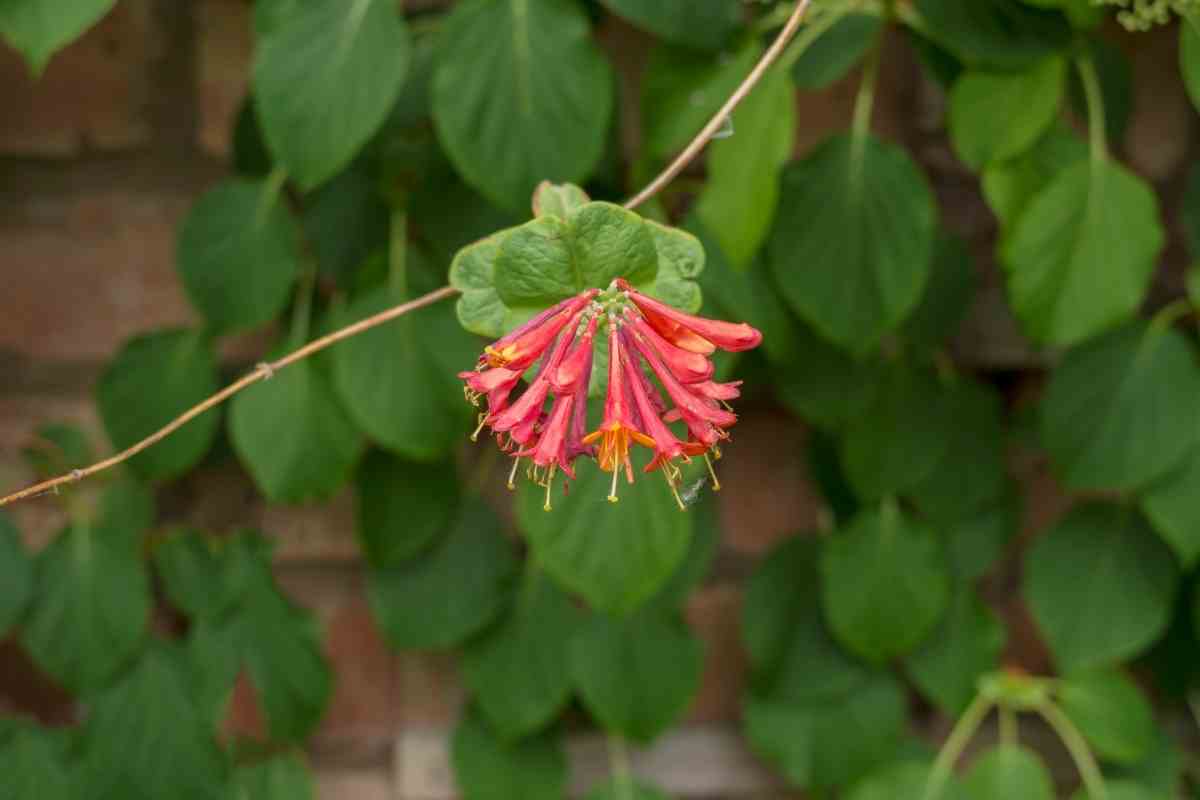Honeysuckle is a beautiful addition to any garden.
Part of the excitement of growing this perennial is the anticipation of its fragrant trumpet-like blooms that enliven the senses.
If you are considering adding honeysuckle to your garden, knowing when honeysuckle blooms can help you to select honeysuckle varieties for a prolonged flowering season.
In This Article – We share a helpful time chart and seasonal guide for the blooming of popular honeysuckle varieties along with everything you need to know to grow and care for honeysuckles in your yard.
About honeysuckle
Honeysuckles or Lonicera are a family of climbing and shrubby plants that are best known for their sweetly scented tubular flowers.
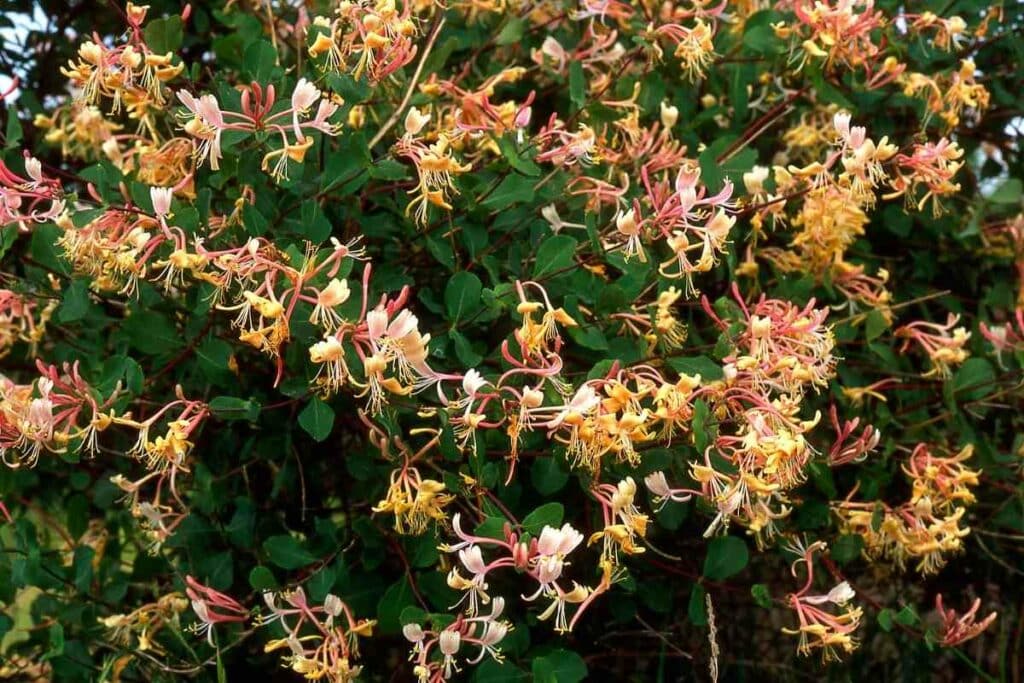
Though the wild or common honeysuckle, Lonicera periclymenum is the best known, honeysuckles are surprisingly varied, with deciduous, evergreen, and cold-season flowering varieties thriving across the northern hemisphere.
The scent of honeysuckle is distinctive and is not only attractive to man but also to important pollinators like bees, birds, insects, moths, and butterflies who target the nectar-rich flowers.
The deliciously scented clusters of flowers come in a range of colors spanning:
- deep reds
- pinks
- orange
- yellow
- cream
- white
After flowering, honeysuckle produces red berries that are appreciated by wildlife but poisonous to humans.
When does honeysuckle bloom?
If you hike trails or roam coastal paths, you’ll know that the scent of honeysuckle is one of those tantalizing signs of spring.
Most honeysuckle varieties are spring flowering, with blooms that release fragrance well into the summer months.
Expect honeysuckle to flower anytime between late March and May, depending on the USDA plant hardiness zone the plant is growing in.
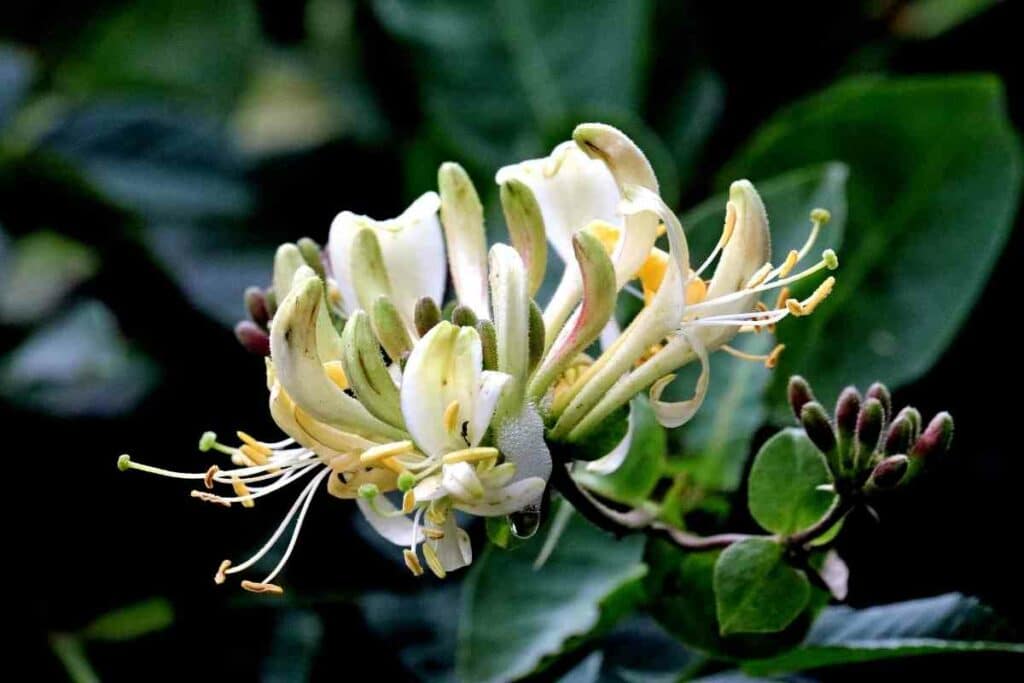
However, other varieties of honeysuckle treat you to their blooms at varying points throughout the year!
Depending on the variety, these honeysuckle plants can flower anytime between March and October as we share below.
Honeysuckle bloom time charts and seasonal guide
The flowering vines of the Honeysuckle are as fragrant as they are beautiful, making the time of their blooming a feast for the senses.
If you enjoy the sweet aroma of Lonicera genus plants in your garden you can plant varieties of honeysuckle that flower at different times.
This strategy could provide you with a captivating scent lasting from early spring through to late summer or even fall and early winter!
Here is a chart of the key honeysuckle varieties with flowering times for you to select and plant in your yard.
| Time of year | Blooming honeysuckle varieties | Flowering time | USDA plant hardiness | Notes |
|---|---|---|---|---|
| Early Spring | Early-blooming fragrant honeysuckle (L. fragrantissima) | March to April | 4 to 8 | Fragrant white blooms. Shrub height of up to 10 feet (3 meters). Considered invasive in some states. |
| Mid-spring | Belgica honeysuckle (L. periclymenum Belgica) | Late April to June | 5 to 9 | Climbing/ rambling vine with white-pink flowers. |
| Tatarian honeysuckle (L. tatarica ‘Alba’) | May | 3 to 8 | White blossoms. Potentially invasive. | |
| Yellow honeysuckle(L. flava) | April to May | 5 to 8 | Fragrant orange-yellow blooms. Shrub height of up to 20 feet (6 meters). | |
| Late Spring | Trumpet honeysuckle (L. sermpervirens) | May to June | 4 to 9 | Bold and bright orange-red blossoms. Fast climbing vine up to 15 feet (4.5 meters) tall. |
| Japanese honeysuckle (L. japonica) | April to July (sometimes as long as October) | 4 to 9 | Fragrant creamy-white flowers. Long, fast-growing vines. Highly invasive. | |
| Summer | Woodbine (L. periclymenum ‘Serotina’) | July to early October | 5 to 9 | Dark red flowers with creamyellow inside. Up to 20 feet (6 meters) tall. |
| Redgold honeysuckle (L. tellmanniana) | May to August | 5 to 9 | Copper-orange flowers with a red flush. Full sun climber. | |
| Early fall | Gold Flame honeysuckle(L. heckrottii) | Late July to early October | 5 to 9 | Pink and orange tubular flowers. |
| Chinese honeysuckle (L. tragophylla) | Late August to early October | 5a to 9b | Can achieve heights | |
| Winter | Winter Flowering Honeysuckle(L. fragrantissima) | mid-December to March | 5a to 9b | Shrub with small white flowers, strong sweet fragrance. |
| Winter Beauty (L. purpusii) | Early December to early April | 5a to 9b | Fragrant white blooms |
Growing honeysuckle
There are so many enticing honeysuckle shrubs and vines to include in your yard, and the great news is that these flowering plants are really easy to grow.
Here are some tips for establishing honeysuckle in your backyard so you can enjoy its fragrant flowering year after year.
When should I plant honeysuckle?
The best time to plant honeysuckle is in early spring after the last frost.
Select a honeysuckle variety that will adapt to your climate by checking the USDA plant hardiness zones for the plant, usually between zones 5 and 9.
Deciduous honeysuckle varieties should be planted closer to the last frost date than evergreen honeysuckles that need a bit more warmth in the soil.
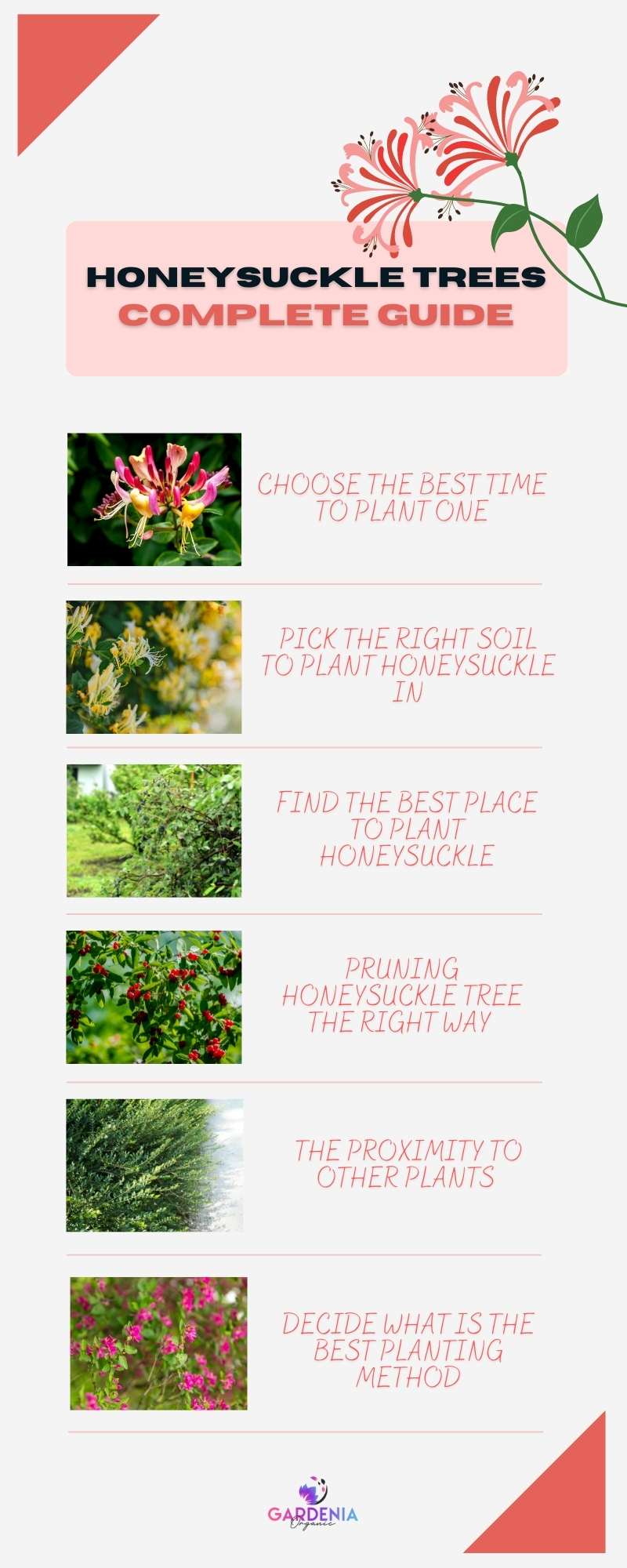
Honeysuckle growing conditions
Honeysuckle isn’t a demanding plant.
It can be a little too vigorous and even invasive in some states. You can make things easier on your plant by selecting a sunny location that offers good drainage.
Most spring-flowering varieties demand full sun to bloom, but some honeysuckle plants can tolerate shade.
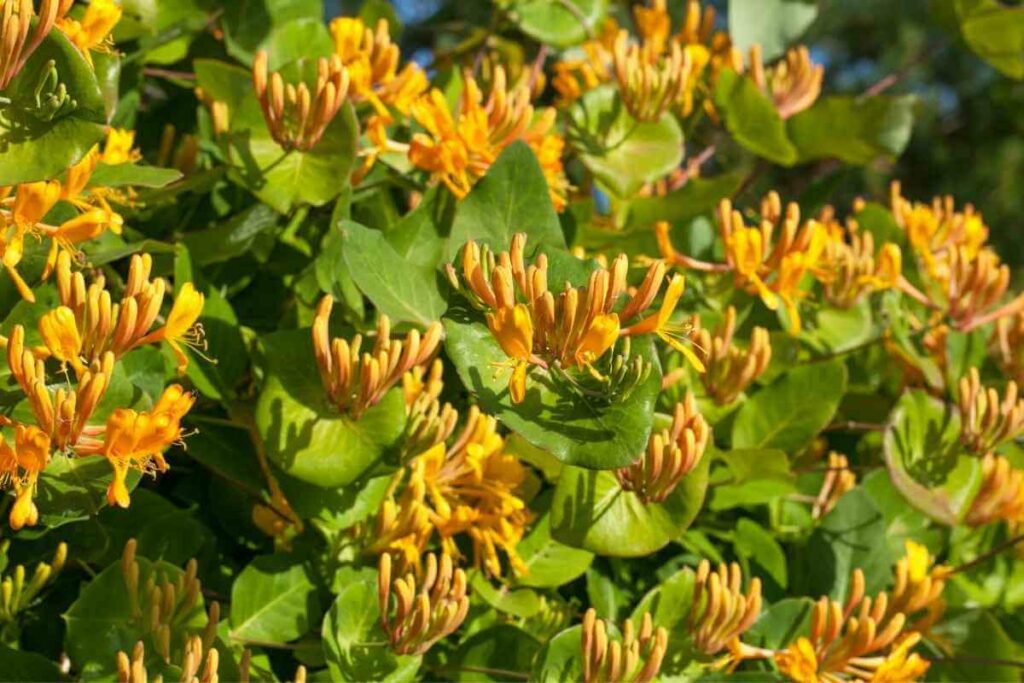
Ensure your soil is well-drained and slightly alkaline (pH 5.5 to 8). The addition of fertilizer, rich compost, or well-rotted manure in the planting hole will get your honeysuckle off to a good start.
Honeysuckle Loves Support – So ensure you provide structure for it to get to grips with. Leave up to a foot (30 centimeters) between your honeysuckle plant and its support.
Your honeysuckle plants will eagerly use pergolas, trellis, frames, and even the side of a building.
You can train your honeysuckle plants to climb your structure by tying them gently to the support with gentle elastic plant ties.
Caring for your honeysuckle plants
Honeysuckle is relatively low-maintenance, but there are a few things you can do to keep it in shape and flowering well.
In the summer months, your honeysuckle plant will appreciate liberal watering as long as the soil is well-drained.
Mulching can help the soil around the plant retain water in very hot weather or drought. As temperatures fall, reduce watering to prevent the plant from becoming waterlogged and rotting the roots.
Honeysuckle does not need to be aggressively pruned. Use pruning to contain and shape your plant especially if it starts to spread irregularly.
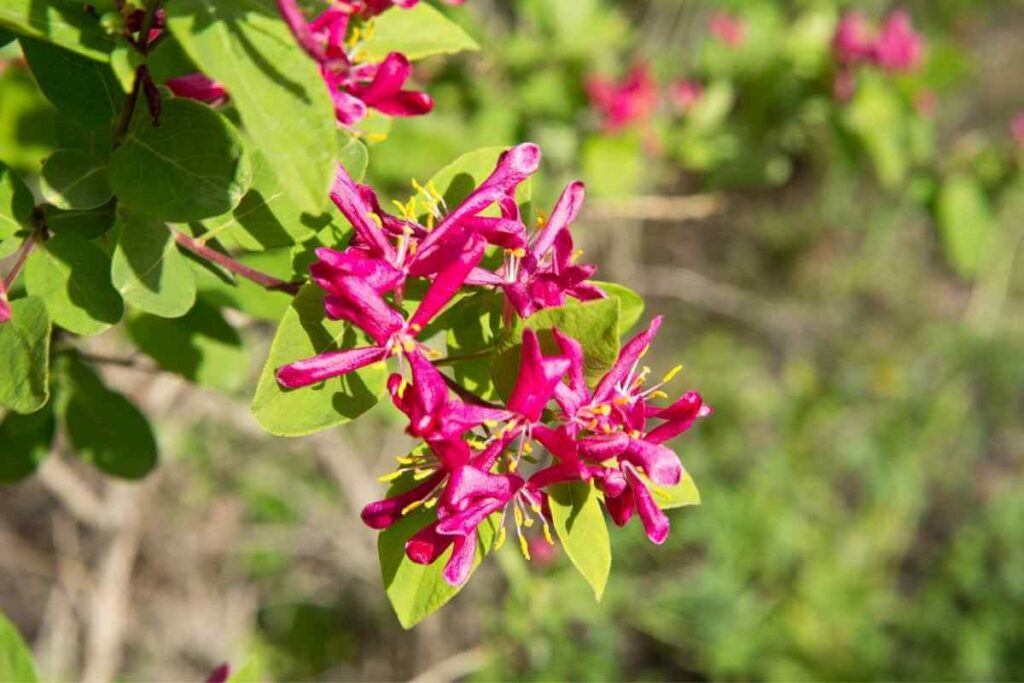
You should also remove any dead or damaged stems throughout the year with a cut just above the leaf node.
Keep In Mind – Avoid pruning side shoots that can eliminate your flowers. The best time to prune a honeysuckle plant is when it slows its growth after flowering or in late fall.
As you can see, honeysuckle is capable of thriving in the colder months, but your spring and summer flowing plants may need a little extra TLC to survive cool-weather conditions.
You can prepare your honeysuckle plants for winter by diligently pruning them at the end of the flowering season and mulching them around their base and roots.
You can feed your honeysuckle with a layer of compost, well-rotted manure or fertilizer feed each spring.
Rounding up
Honeysuckle is a delightful plant to introduce into your garden and is quick and easy to get established.
Once planted, it can take up to three years to reach its flowering potential but after this period your honeysuckle will provide a joyful display every year.
If you are wondering how to prolong your fragrant honeysuckle blooms, the answer is to plant the honeysuckle in a location with maximum sunlight and avoid shade.
Honeysuckle requires at least six hours of sunlight daily to deliver its best flowering.
